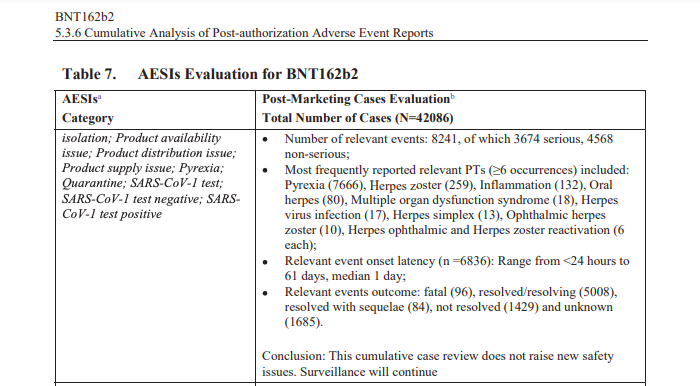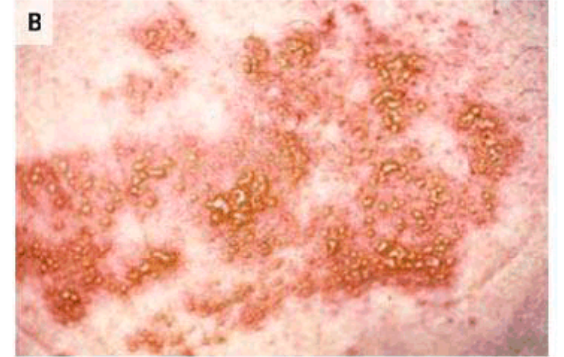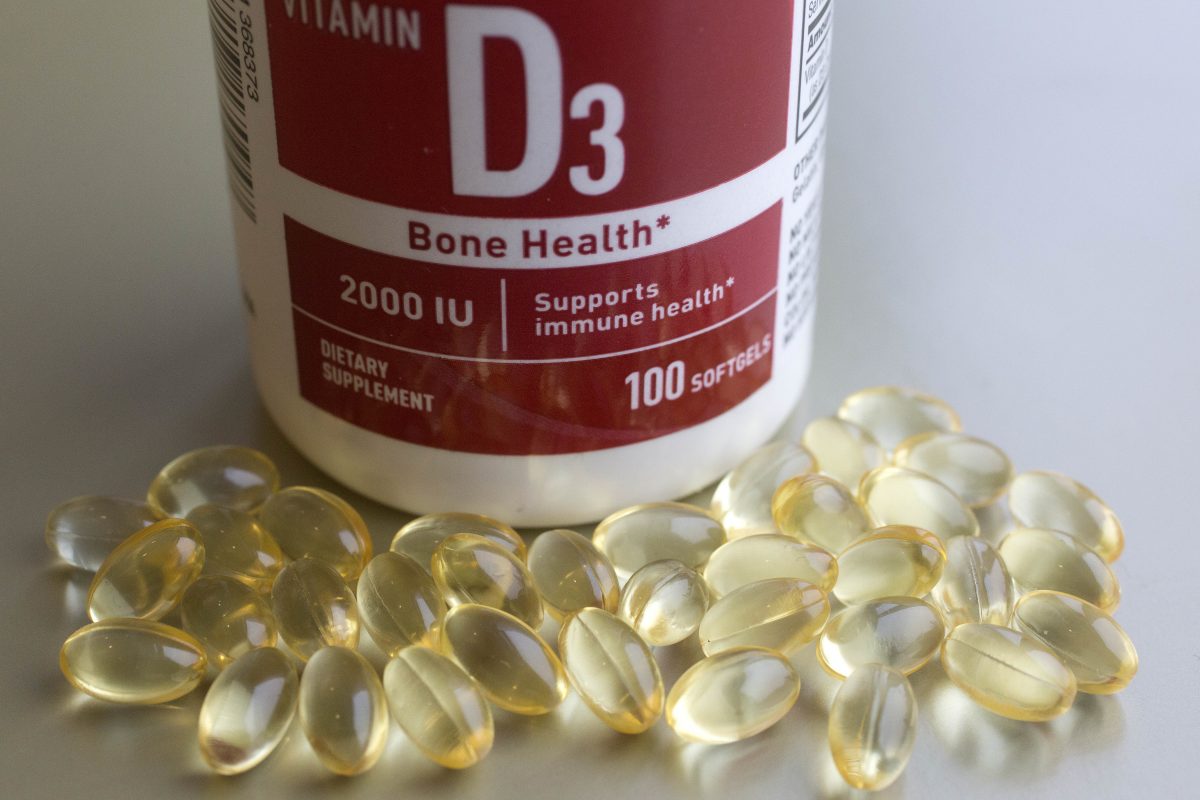Reactivation of Chickenpox Virus Following COVID-19 Injections on the Rise
Doctors and scientists are seeing an increase in the reactivation of the chickenpox virus, known as varicella-zoster virus (VZV), following the COVID-19 injections.
The chickenpox virus is one of the eight herpes viruses known to infect humans. After a person contracts and recovers from chickenpox, the virus never leaves the body but lies dormant in the nervous system years later until it gets reactivated as shingles, or herpes zoster (HZ).
Federal health authorities claim that there’s no correlation between COVID-19 injections and shingles, but studies show that there is a higher incidence of shingles in people who’ve received the vaccine.
Israel was one of the earlier countries to publish a case series of six women (out of 491 participants) with an autoimmune disorder who developed shingles 3 to 14 days after receiving the first or second dose of Pfizer COVID-19 shot. None of the 99 participants in the control group developed shingles. The study was published in the journal Rheumatology in April 2021.
“To our knowledge, there were no reports of varicella-like skin rash or HZ in the mRNA-based vaccines COVID-19 clinical trials and our case series is the first one to report this observation in patients within a relatively young age range: 36–61, average age 49 ± 11 years,” the authors wrote.
They hoped that publishing the case series would “raise awareness to a potential causal link between COVID-19 vaccination as a trigger of HZ reactivation in relatively young patients with stable AIIRD [autoimmune inflammatory rheumatic diseases].”

In a different case study from Taiwan, researchers reported three healthy men ages 71, 46, and 42 who developed shingles two to seven days following the first dose of the Moderna or AstraZeneca COVID-19 injection.
“HZ does not often appear after the administration of other kinds of vaccinations,” the researchers wrote. “But we believed that there might be a link between COVID-19 vaccine and HZ emergence.”
“One of the reasons is the short delay of onset after vaccination. The other reason is that these three patients were immunocompetent,” they added.
The largest study to date, based on real-world data (pdf) of more than two million patients, found that there was a higher incidence of shingles among the vaccinated (who received a COVID-19 shot within 60 days) than in the unvaccinated cohort, who were diagnosed with shingles within 60 days of visiting a healthcare office for any other reason.
According to the researchers, the risk of developing shingles was calculated as 0.20 percent for the vaccinated group and 0.11 percent for the unvaccinated, and the “difference was statistically highly significant.”
“Reactivation of the varicella-zoster virus appears to be a potential ADR [adverse drug reaction] to COVID-19 vaccines, at least for mRNA LNP-based formulations,” the authors wrote, adding that “vaccination against COVID-19 seems to potentially raise the risk of precipitating HZ [herpes zoster].”
Dr. Richard Urso, an ophthalmologist, and drug design and treatment specialist, told EpochTV’s “American Thought Leaders” program in April 2022 that of the three to five patients he sees a week with long COVID or problems after receiving the COVID-19 shot, “a huge number of them have reactivated Epstein-Barr, herpes simplex, herpes zoster, CMV.”
Regardless of the rise in reports of shingles after the rollout of the COVID-19 shots, the U.S. Food and Drug Administration (FDA) claims that it has not detected any safety signal between the two.
“FDA has not seen a safety signal for shingles/herpes zoster following administration of the approved or authorized COVID-19 vaccines,” Abby Capobianco, FDA press officer told The Epoch Times via email last month, adding that the agency “will continue to closely monitor the safety of these vaccines.”
The Centers for Disease Control and Prevention (CDC) also alleges that “there is no current connection” between COVID-19 vaccines and the reactivation of the chickenpox virus.
CDC spokesperson Scott Pauley said that any adverse reactions experienced after receiving a COVID-19 shot are temporary and a positive sign that the vaccine is working.
“Some people have side effects from the vaccine, which are normal signs that their body is building protection,” Pauley wrote in an email to The Epoch Times. “These side effects may affect their ability to do daily activities, but they should go away in a few days. Some people have no side effects, and allergic reactions are rare.”
Adverse Events of Special Interest

Shingles is listed as one of the 1,291 adverse events of special interest in Pfizer’s safety document (pdf) released by the FDA in March 2022.
Adverse events of special interest (AESI) are side effects—that can be severe or not but can lead to a serious medical condition—that health care practitioners should look out for following vaccination, according to Dr. Jesse Santiano, an emergency room physician and internist.
“The medical conditions in the list does not mean that the Pfizer COVID-19 vaccine causes all of those,” Santiano said on May 11. “That’s because we don’t have enough data to make that conclusion, at least not yet.”
The list of medical conditions is not specific to only Pfizer, but to all COVID-19 vaccines administered globally. Anyone who’s received a COVID-19 injection and then diagnosed with a disorder on the list—whether months or years after the shot—should make a report to the vaccine maker or Vaccine Adverse Events Reporting System (VAERS).
The earliest reports made to VAERS of people developing the painful rash after their COVID-19 shot was in December 2020. According to the latest VAERS data as of June 10, 2022, there were 1.301 million total COVID-19 reports in the database, of which, 13,887 cases were of shingles.
In comparison, a search of herpes zoster and influenza vaccines or shingles vaccine resulted in 1,127 total events in the past three decades and more than 18,000 events in over 15 years, respectively.
The CDC says that VAERS reports do not necessarily mean that the vaccine caused the adverse effect.
The Epoch Times has reached out to Pfizer for a request for comment.
Treatment
Shingles is characterized by a painful, stripe-like rash or small blisters that usually appear on one side of the body or face.
Many individuals with shingles experience one or more of the following symptoms: burning and shooting pain; fluid-filled blisters; skin that itches, tingles, or is numb; and fever, chills, headache, or upset stomach.
The disease usually resolves in two to four weeks after the blisters develop, but some people may develop complications such as persistent nerve pain known as post-herpetic neuralgia, vision or hearing loss, and Ramsay Hunt Syndrome which causes facial paralysis.

When the rash is in the blister stage, people with shingles can spread the virus to those who have not yet had chickenpox or the chickenpox vaccine.
The National Foundation for Infectious Diseases says that about 1 million Americans develop shingles each year and “half of the population who lives to 85 years of age will experience shingles during their lifetime.”
It’s not clear what triggers the reactivation of the chickenpox virus, but the most significant risk factor for shingles is an immune system that is weakened or compromised. If your immune system isn’t performing properly, the chickenpox virus can reactivate.
Extreme stress, old age, taking immunosuppressive drugs, or certain diseases and vaccines are factors that may increase the risk of shingles.
While the risk of getting shingles goes up for people aged 50 and older, studies have shown that shingles may also occur in young, healthy people after receiving a COVID-19 vaccine.
Dr. Keith Berkowitz, an internist, says that shingles usually present as a secondary disease.
“Typically, shingles is never a primary process, it’s usually a secondary process,” Berkowitz told The Epoch Times. “It’s something compromising the immune system leading them to develop shingles.”
Treatment for shingles should begin immediately after the rash appears and consists of one of the three FDA-approved antivirals (acyclovir (Zovirax), valcyclovir (Valtrex)) to “shorten the length and severity of the illness” and nerve pain medications, the CDC says. Cold, wet compresses, calamine lotion, and colloidal oatmeal baths may also help relieve itching.

Shingles may also be treated with supplements such as lysine, quercetin, and vitamin D (when taken early), according to Berkowitz who prescribes them to his patients.
He says that the ratio of lysine to arginine in a person’s body is particularly important when it comes to shingles.
“The spreading of shingles requires the virus to multiply, and the amino acid arginine that helps the herpes virus replicate. Lysine interferes with arginine and helps prevent herpes from spreading,” Berkowitz said.
Lysine and arginine are essential amino acids that are needed to help the body build proteins. Unlike arginine, the body cannot produce lysine on its own and can only be obtained from certain foods or with supplementation. During a shingles outbreak, it’s advisable to avoid foods that are high in arginine like nuts and seeds, tofu, and chocolate, among other foods.
Quercetin—a natural pigment (flavonoid) found in many vegetables, fruits, and grains—has anti-inflammatory and antioxidant effects “that might help reduce swelling, kill cancer cells, control blood sugar, and help prevent heart disease,” according to webmd.com. Berkowitz says that quercetin “suppresses viral replication” in shingles.
As for vitamin D, Berkowitz explains that it “acts as an effect-modifier for the entire herpes zoster spectrum with regard to disease susceptibility, manifestation, the efficacy of pharmacologic management, and emergent complications during treatment.”
Studies have shown that vitamin D has important functions beyond just bone health, which include regulating immune function and inflammation.
Besides lysine, quercetin, and vitamin D, Berkowitz also suggests taking probiotics like lactobacillus to possibly help improve your immune system.
“Probiotics such as lactobacillus may help to treat herpes by boosting your body’s immune system,” Berkowitz said. “Special peptides are found in lactobacillus and are essential in inducing a rapid immune response in your body. Once activated, the immune system can do its job of protecting your body.”
People who are having symptoms of shingles should consult with their doctor about what treatment would best suit them. Those who experience shingles on the face should seek immediate medical attention.
The CDC recommends the shingles vaccine for older people aged 50 and older and adults 19 and older “who have weakened immune systems because of disease or therapy” to prevent the disease.



.png)



Comments
Post a Comment